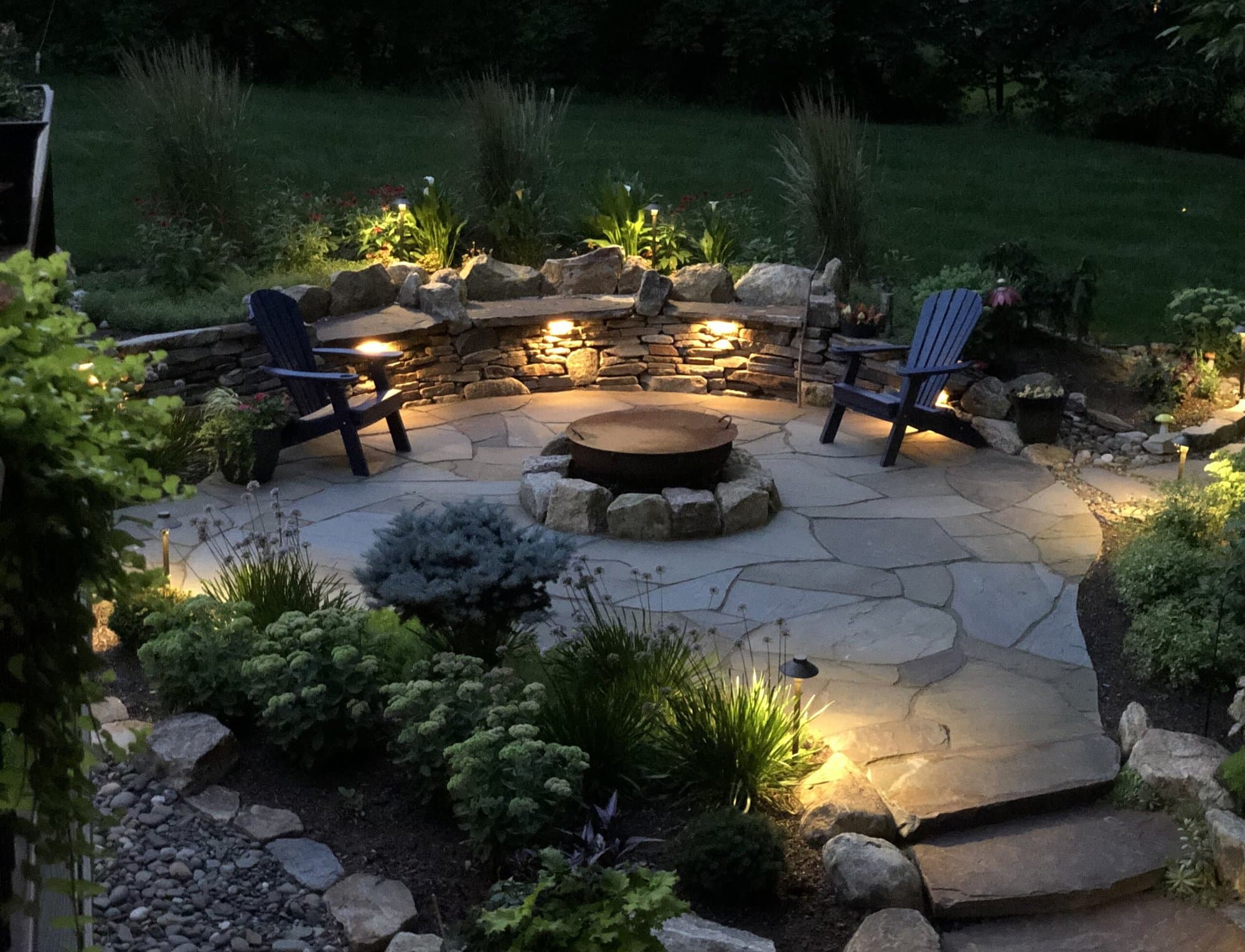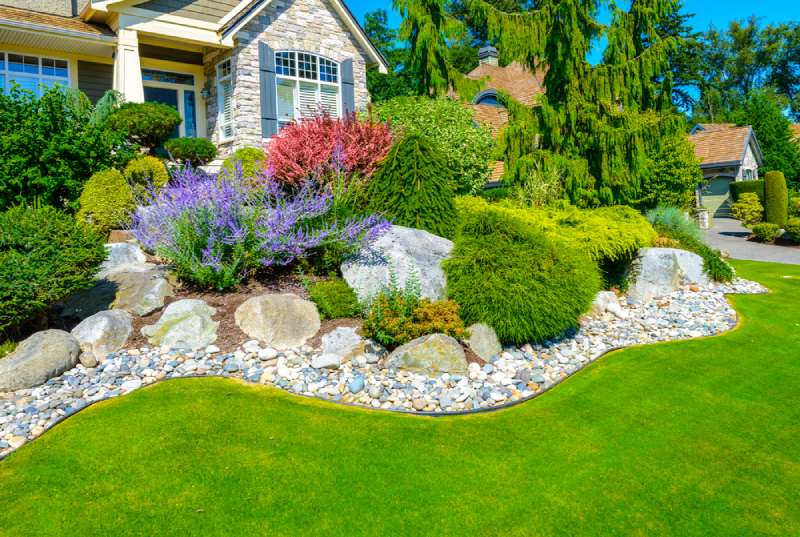A Comprehensive Overview to Creating and Implementing Effective Landscape Design Solutions
The art and science of landscaping extend beyond simple looks; they involve a thoughtful assimilation of design concepts, ecological stewardship, and functional implementation. What techniques can one employ to make sure these landscapes not only flourish but additionally grow in consistency with their surroundings?

Understanding Landscape Design Concepts
One may question what foundational components add to reliable landscape design. At its core, effective landscape style rests on numerous vital concepts that guide the arrangement and option of elements within an area. These concepts consist of unity, equilibrium, percentage, and rhythm, each offering to produce an unified exterior setting.
Unity describes the cohesive partnership among different components, making certain that they interact cosmetically and functionally. Balance can be accomplished through symmetrical or asymmetrical setups, allowing the landscape to feel stable and inviting. Percentage entails recognizing the scale of aspects in regard to each various other and the surrounding atmosphere, advertising visual consistency and comfort.

Analyzing Your Outdoor Space
Before executing the principles of landscape design, a complete assessment of your exterior space is important. This first assessment aids specify the scope of your landscape design job and makes certain that your design lines up with the special characteristics of your residential or commercial property. Begin by analyzing the dimensions of your space, taking precise dimensions to understand the available area for various aspects such as patio areas, paths, and gardens.
Following, observe the existing attributes of your landscape, including topography, dirt high quality, and drainage patterns. These aspects dramatically affect plant selection and placement. In addition, assess the sunshine exposure across different areas throughout the day, as this will certainly impact the kinds of plants that grow in your yard.
Take into consideration the microclimates created by structures, trees, and other obstacles, as they can influence temperature level and dampness levels. Take note of any kind of existing plants or hardscape aspects that you want to remove or retain. This extensive analysis prepares for a effective and knowledgeable landscaping service, ensuring that your design is not only cosmetically pleasing yet additionally functional and sustainable for many years ahead.
Lasting Landscape Design Methods
Including lasting landscape design strategies is crucial for creating an ecologically accountable outside area. These methods not only advertise eco-friendly balance but likewise enhance the aesthetic and practical value of a landscape. One fundamental method is the application of indigenous plants, which require less water and upkeep while sustaining neighborhood wildlife. Implementing reliable watering systems, such as drip irrigation, reduces water waste and ensures that plants receive sufficient dampness.

One more effective strategy is the calculated positioning of trees and bushes to provide all-natural windbreaks and shade, thus reducing energy costs (Palm Desert Landscaping). Rain yards can be integrated right into the landscape layout to handle stormwater drainage successfully, filtering contaminants prior to they go into rivers
Choosing the Right Plants
Choosing the right plants for your landscape is critical to attaining both visual charm and eco-friendly consistency. The procedure begins with an understanding of your regional climate, dirt conditions, and the certain microenvironments within your landscape. Evaluating elements such as sunlight direct exposure, wetness degrees, and existing plants will certainly help you choose plants that grow in your distinct setting.
Take into consideration including indigenous plants, as they are well-adapted to regional conditions, need less upkeep, and assistance local visit the website wildlife. Additionally, selecting a diverse variety of species can enhance biodiversity while lowering the threat of illness and pest outbreaks. It is important to assess the development habits, flowering periods, and seasonal shades of potential plants to produce a cohesive and vibrant landscape.
In addition, believe regarding the intended usage of the room; as an example, if the location will experience high foot web traffic, choose resilient ground covers. By thoughtfully picking plants that straighten with both Check Out Your URL your visual goals and ecological demands, you can create a lasting landscape that not only boosts your property however additionally contributes favorably to the surrounding ecosystem.

Execution and Upkeep Methods
Once the right plants have actually been picked for your landscape, the emphasis shifts to effective application and continuous maintenance approaches. Effective setup starts with correct website preparation, that includes dirt testing to identify nutrient levels and pH, adhered to by modifying the dirt as required. Very carefully organize plants according to their development routines and light demands, ensuring appropriate spacing to advertise healthy growth.
Irrigation is a vital component of implementation. Establish a watering routine that considers the certain demands of each plant varieties, readjusting for seasonal modifications. Making use of drip irrigation systems can enhance water efficiency and minimize drainage.
Upkeep methods need to be carried out to make sure the longevity and vigor of your landscape. Normal tasks consist of weeding, mulching, and pruning to regulate development and stop illness. Fertilizing ought to be conducted based on dirt tests, providing the necessary nutrients without over-fertilizing.
Monitoring for parasites and diseases is necessary; early discovery can avoid considerable damages. Last but not least, seasonal adjustments to upkeep regimens, such as winterizing perennials and preparing for springtime development, will certainly ensure that your landscape remains visually attractive and healthy and balanced year-round.
Final Thought
To conclude, efficient landscape design options require an extensive understanding of layout concepts, careful analysis of outside rooms, and the application of sustainable strategies. The selection of ideal plant types plays an essential function in improving visual appeal and ecological resilience - Palm Desert Landscaping. Effective application and ongoing maintenance better make certain the durability and vitality of landscapes. By incorporating these elements, landscapes can be transformed right into attractive, practical settings that advertise biodiversity and contribute positively to area wellness.
One could wonder what fundamental components add to effective landscape layout. At its core, successful landscape layout pivots on numerous essential principles that direct the arrangement and selection of aspects Recommended Site within a space.Picking the right plants for your landscape is crucial to achieving both visual allure and ecological harmony. It is necessary to assess the growth behaviors, growing durations, and seasonal shades of prospective plants to produce a cohesive and vibrant landscape.
When the appropriate plants have been chosen for your landscape, the focus changes to reliable application and continuous maintenance strategies.